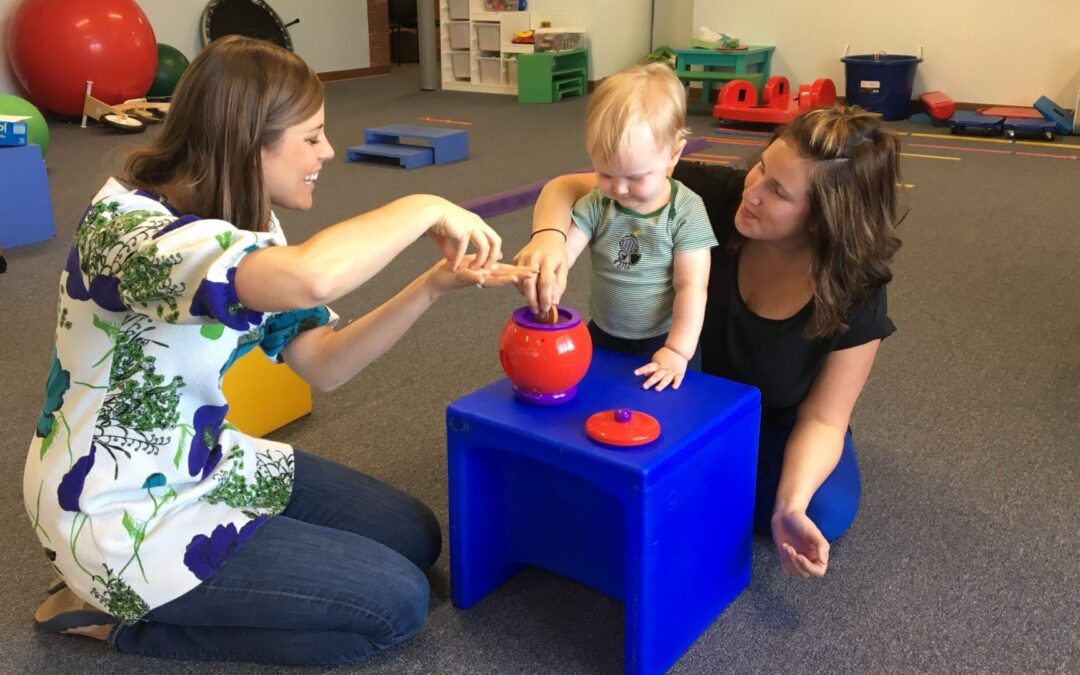Navigating through developmental challenges can be overwhelming for both children and their parents. At Watch Me Shine, we believe that combining speech and occupational therapy can create a well-rounded approach to help children overcome these hurdles. Co-treatments are designed to address multiple aspects of a child’s development simultaneously, providing a more holistic intervention.
When speech and occupational therapists work together, they can tailor activities that address both communication skills and physical coordination. This collaborative approach ensures that the child receives comprehensive care, targeting different developmental areas in an integrated manner. The combined expertise of speech-language pathologists (SLPs) and occupational therapists (OTs) creates a more dynamic and effective therapy session, ultimately fostering greater improvements for the child.
Co-treatments are particularly beneficial for children with complex needs, such as those with autism spectrum disorder (ASD), ADHD, or other developmental delays. By addressing both motor skills and language development concurrently, co-treatments offer a richer, more engaging therapy experience. This integrated method not only accelerates progress but also makes therapy more enjoyable and less fragmented for the child.
Understanding the Benefits of Co-Treatments in Therapy
Co-treatments in therapy offer numerous benefits that can significantly enhance a child’s development. The primary advantage is the integration of expertise from both speech-language pathologists (SLPs) and occupational therapists (OTs). This combination allows for a more comprehensive approach, addressing multiple developmental areas in a single session. For instance, a child working on speech clarity can simultaneously improve fine motor skills, like handwriting, during the same activity.
Another key benefit is the consistency and cohesion in therapy. Co-treatments ensure that both therapists are on the same page, using complementary techniques to reinforce each other’s goals. This helps create a unified therapy plan that can make progress more seamless and efficient. When therapists collaborate, they can quickly adjust strategies to meet the child’s evolving needs, ensuring that every session is as effective as possible.
Co-treatments also provide a more engaging and enjoyable experience for the children. By blending activities that target different skill sets, therapy sessions become more dynamic and less repetitive. This variety keeps children motivated and reduces the risk of them becoming bored or frustrated. As a result, children are more likely to participate actively and look forward to their therapy sessions, making consistent progress over time.
How Speech and Occupational Therapy Work Together
Speech and occupational therapy co-treatments work together by addressing both communication and motor skills in an integrated manner. During these sessions, SLPs and OTs use activities that combine speech exercises with physical tasks, creating a holistic learning environment. For example, a child might engage in a conversation while completing a puzzle, thereby practicing verbal skills alongside fine motor coordination.
One common approach is to have the child perform oral motor exercises that enhance speech clarity while engaging in activities that improve hand-eye coordination. For instance, playing a game that requires the child to identify and name objects while also manipulating them can target both speech and motor skills simultaneously. This dual focus ensures that the child improves in multiple areas during each session, making the therapy more efficient and effective.
Moreover, co-treatments can address sensory processing issues that might impact both communication and physical abilities. For example, a child with sensory challenges might work with an SLP to modulate their voice volume while also working with an OT to regulate their body movements. By tackling these interconnected issues together, therapists can help the child achieve a higher level of overall function and comfort in various settings.
Through these collaborative efforts, co-treatments create a more comprehensive and effective therapy experience that addresses the child’s needs in a well-rounded manner.
Key Techniques and Activities Used in Co-Treatments
In speech and occupational therapy co-treatments, we employ a variety of techniques and activities designed to address multiple developmental needs simultaneously. These methods are tailored to ensure that children receive comprehensive care targeting both communication skills and motor functions. Here are some common techniques and activities used:
1. Sensory Integration Therapy: This technique helps children manage sensory processing issues. Activities might include playing with textured materials while practicing speech sounds or words. The goal is to enhance both sensory regulation and verbal skills.
2. Play-Based Activities: Games and pretend play are excellent for engaging children in co-treatments. For instance, playing “store” allows children to work on verbal exchanges (speech) and tasks like handling toy money (fine motor skills).
3. Obstacle Courses: Combining physical activity with speech tasks enhances coordination and communication. Children might crawl through tunnels or jump over hurdles while naming objects or answering questions.
4. Art and Craft Projects: Creating art involves tasks that improve fine motor skills, such as cutting and coloring, while also incorporating language development through explaining the project or describing the materials used.
By integrating these activities, co-treatments provide a dynamic and stimulating environment that supports holistic development. This approach ensures that all aspects of the child’s growth are addressed in a cohesive manner.
Tips for Maximizing the Benefits of Co-Treatments at Home
Parents play a crucial role in reinforcing the progress made during co-treatments. Here are some practical tips to help maximize the benefits of these therapies at home:
1. Create Routine and Consistency: Establish a routine that includes time for practicing speech and motor skills daily. Consistency helps reinforce what your child learns during therapy sessions.
2. Engage in Joint Activities: Choose activities that combine speech and motor tasks, like cooking together. Let your child help with measuring ingredients (fine motor skills) while discussing the recipe and steps (verbal skills).
3. Use Everyday Opportunities: Turn daily activities into learning moments. During grocery shopping, have your child read the shopping list (speech) and help find items on the shelves (motor coordination).
4. Encourage Socialization: Join peer socialization groups where your child can practice communication and social interaction in a supportive setting. This helps reinforce skills learned in therapy in real-life social contexts.
5. Offer Positive Reinforcement: Celebrate your child’s progress with praise and rewards. Positive reinforcement boosts confidence and motivates continued effort.
By incorporating these strategies, parents can create a supportive home environment that complements the work done in co-treatments, aiding in their child’s overall development.
Conclusion
Speech and occupational therapy co-treatments offer a holistic approach to addressing multiple developmental needs in children. By combining the expertise of SLPs and OTs, these co-treatments provide comprehensive care that enhances communication, motor skills, and sensory processing simultaneously. As we have discussed, various techniques and activities are used to make therapy sessions effective and engaging.
Parents also play a significant role in maximizing the benefits of co-treatments. By creating routine, engaging in joint activities, and encouraging socialization at home, parents can reinforce the progress made during therapy sessions. This collaborative effort between therapists and parents ensures that children receive the best possible support for their developmental journey.
If you are interested in learning how our speech and occupational therapy co-treatments can benefit your child, contact Watch Me Shine today. Let’s work together to help your child reach their full potential.

